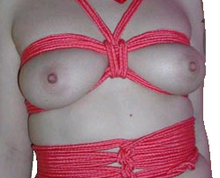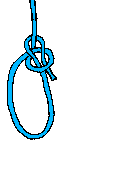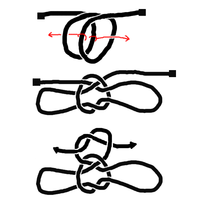Shinju: Difference between revisions
No edit summary |
No edit summary |
||
| Line 6: | Line 6: | ||
The basic or foundational Kinbaku form of binding the arms and breasts is known as the "[[Takate-kote|Ushiro Takate-kote]]"; which is to bind the arms behind (ushiro) the back in a box arm position ([[takate-kote]]). This basic box arm tie originally found in the samurai martial art of Hojōjutsu (捕縄術) or Nawajutsu, (縄術) evolved into its erotic usage at the end of the 19th century and early 20th century and is foundational to most other Kinbaku ties. | The basic or foundational Kinbaku form of binding the arms and breasts is known as the "[[Takate-kote|Ushiro Takate-kote]]"; which is to bind the arms behind (ushiro) the back in a box arm position ([[takate-kote]]). This basic box arm tie originally found in the samurai martial art of Hojōjutsu (捕縄術) or Nawajutsu, (縄術) evolved into its erotic usage at the end of the 19th century and early 20th century and is foundational to most other Kinbaku ties. | ||
{{sa|Japanese Bondage}} | {{sa|Japanese Bondage}} | ||
==References== | ==References== | ||
Revision as of 19:37, 12 August 2021
Shinju (from the Japanese (真珠) meaning pearl) is a word used euphemistically in Japanese to refer to the female breast. It is also popularly used as the name of a type of female halter top in the clothing industry.
It has been popularly claimed that "shinju" is an authentic Japanese term for a breast bondage tie. The tie is usually shown to be something similar to what in the west bondage is called a "bikini harness". There is however, no such tie called a "shinju" found in historic or present "Kinbaku" (Japanese Bondage). The word was erroneously applied to Japanese Rope Bondage in Europe in the mid-1990s by commercial websites.
The basic or foundational Kinbaku form of binding the arms and breasts is known as the "Ushiro Takate-kote"; which is to bind the arms behind (ushiro) the back in a box arm position (takate-kote). This basic box arm tie originally found in the samurai martial art of Hojōjutsu (捕縄術) or Nawajutsu, (縄術) evolved into its erotic usage at the end of the 19th century and early 20th century and is foundational to most other Kinbaku ties.
See also [ Japanese Bondage ]
References
- Shibari You Can Use, Lee Harrington, ISBN 978-0-6151-4490-0: Pages 51-96
See also
- Glossary of Japanese Bondage Terms - "See Shinju"
- Shinju Illustrated Tie
- Crotch rope
- Breast bondage
- Rope bondage
- Rope harness
Template:Cat6 There are so many, many knots available to us all. There are three specific knots that I will talk about here.
This knot can tie two ropes or two ends of a rope together.
This knot is used to tie a non-slip loop on the end of a rope
I think the usage of this handcuff knot is self-explanatory
The name of the game is "Bondage and Discipline", not "Cuffs and Discipline". Bondage is an elemental part of B&D sessions. If you are insecure about your knot-tying abilities, your client will definitely notice it.
These three knots above should be considered 'bare minimum requirements' for anyone wishing to do sessions. For safety reasons, you should also be able to tie and untie them in the dark.
See also Curricula and/or Rope and Knot terms

|
This article is about either
|
What links here • References and Sources • Contact info • Category:Root ⤴
Chat rooms • What links here • Copyright info • Contact information • Category:Root



